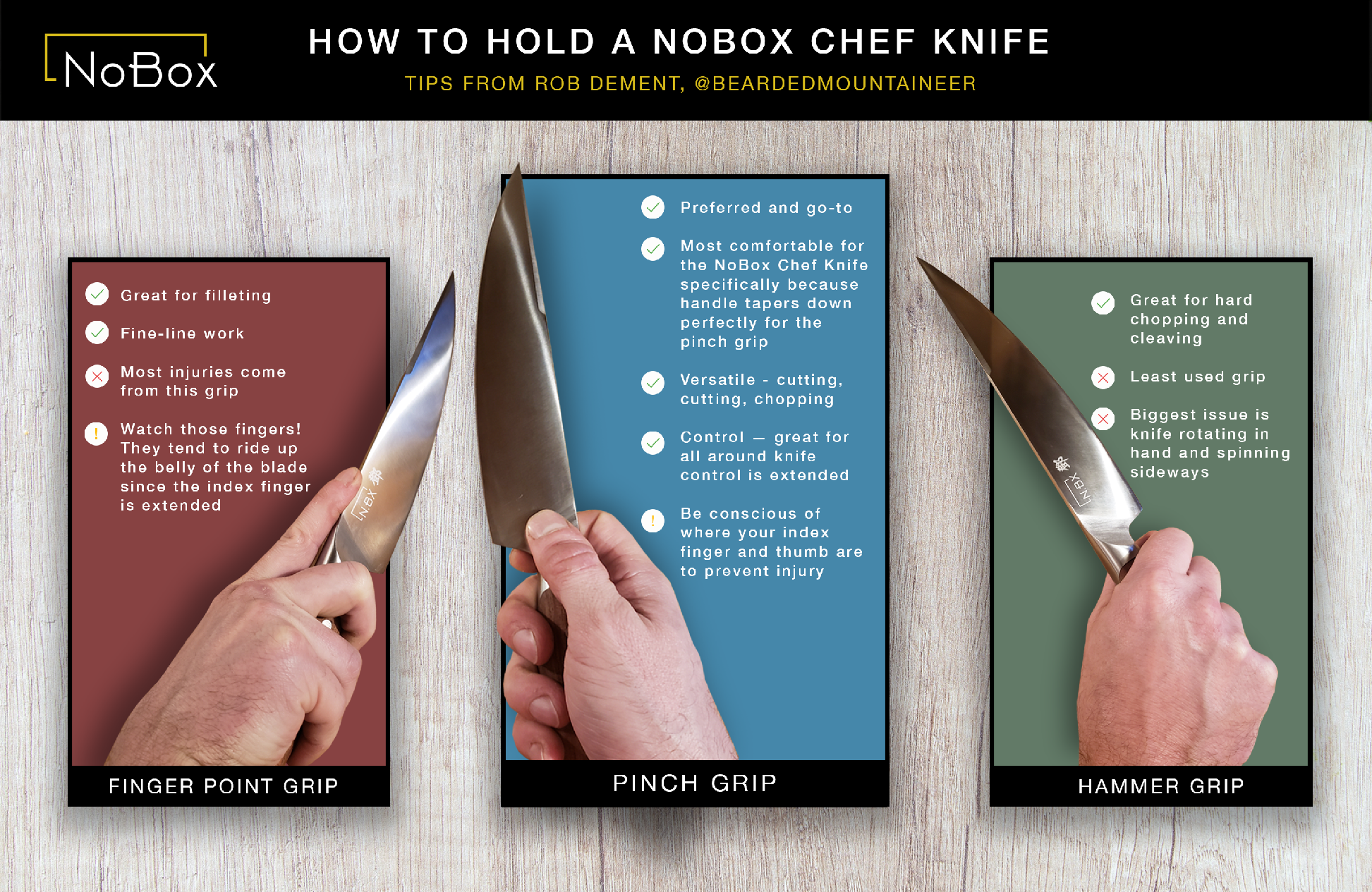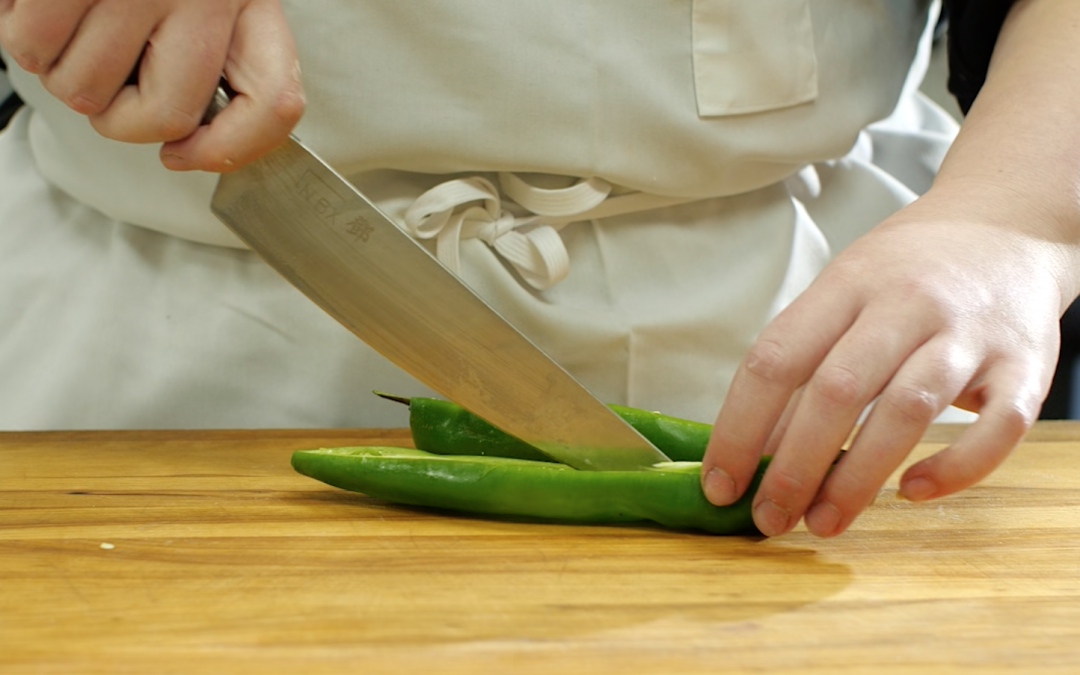We get it, knives are intimidating, and watching Gordon Ramsay chop an onion at 100 MPH does nothing but increase the anxiety regarding this essential kitchen tool. Heck, even watching a seasoned chef (like your sweet grandma who’s been cooking for 3 quarters of a century) is something to aspire to.
With kitchen knives coming in many different shapes and sizes, figuring out how to best hold them to increase effectivity can be a hassle, not to mention a hazard for your fingertips should disaster strike. In this guide we’ll dispel any doubts you have on your grip, in turn making you more comfortable in the kitchen and turning your blade into your most trusted companion.
Handle Grip
Contrary to what would seem logical, gripping the handle of your chef’s knife with your entire hand is usually not the ideal way to go about it. Instead, your thumb should be at the base of the blade with your index finger in the same spot on the opposite side. With your other three fingers around the handle, you should quickly feel in better control of your knife. This type of technique is usually the one taught at culinary school and if that doesn’t validate it as proper knife etiquette, we don’t know what does.
The Curl
Your free hand seldom hangs limp when cutting something, unless your goal is getting whatever you’re chopping all over your counter. Your free hand, also known as your guiding hand, is usually what’s keeping what you’re cutting from moving, thus making for more evenly cut food and in turn making it more evenly cooked. The best and safest way for your guiding hand to grip something is to do so with your fingertips stable on the food item with your fingers slightly curled. The blade should rest on your first knuckles as you’re cutting, keeping your fingertips safe from the sharp edge and your knife stable as you efficiently cut your way towards an aesthetically pleasing and evenly cooked meal.
Recommended grip for the NoBox Chef Knife

Rob Dement was a line cook for several years in the industry. He loves the quality of our knife and says it holds up next to his professional blades in terms of durability and sharpness of the steel. He said it’s his favorite blade in the home.
Your hands might feel unused to the new techniques at first, which is both expected and completely fine. We recommend practicing on something that’s easy to come by, such as an onion and to dedicate patience and time towards the skill. With time you will grow accustomed to the new ways of handling your knife, and whatever you did before will suddenly feel unnatural and clumsy. If you’re uncertain regarding your current chef’s knife’s quality and ability to further your skills in the kitchen, NoBox’s Chef Knife works for almost all occasions with incredible sharpness, durability, and an ergonomic handle. Its German-grade level stainless steel is both affordable and easy to maintain, making it the perfect kitchen companion.
References:
-
https://www.seriouseats.com/2010/05/knife-skills-how-to-hold-a-knife.html
-
https://www.finecooking.com/article/how-to-hold-a-chefs-knife
-
https://www.thespruceeats.com/how-to-use-a-chefs-knife-995812
-
https://shop.mybluprint.com/cooking/article/how-to-hold-a-knife/
-
https://www.latimes.com/food/dailydish/la-dd-how-to-hold-chef-knife-20160912-snap-story.html


Recent Comments